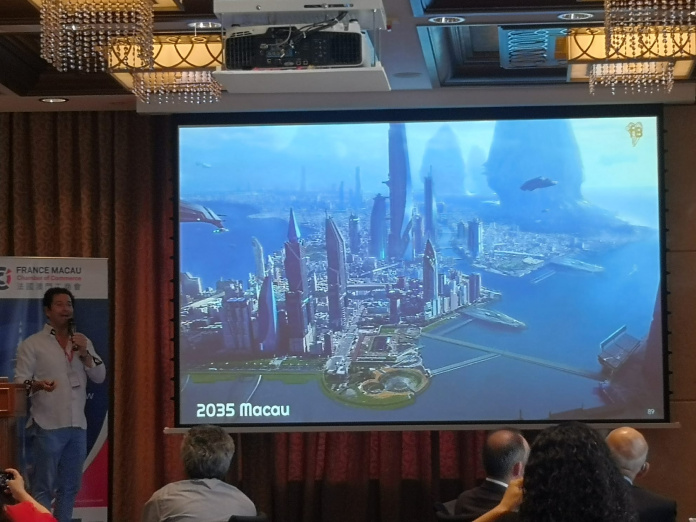Macau could be a reference in terms of smart mobility but it requires leadership from authorities and entrepreneurs to achieve this goal, a vehicle designer stated in a seminar held today (Wednesday).
The comment was made by the car designer and Global Design Director of AxiusDesign Group, Filipe Bragança, in a talk focused on smart mobility held by the France Macao Chamber of Commerce today.
According to Bragança many smart mobility solutions and policies that could boost the use of electric vehicles in Macau are already in widespread use in cities on the other side of the border, with Shanghai – where he usually resides and works – a prime example.
“This is a hot topic we are trying to find ways to create this but it is a medium to long term process to convince people. When I arrive in Macau I’m, always surprised when I’m driving, I open the window and all I hear is the noise of motorbikes. In Shanghai, I ride a bike and there are special lanes. Although it’s a city with 25 million people and cars everywhere, cars will be at least a five meters distance from people,” Bragança said.
“I felt more in danger and uncomfortable in Macau than riding my bike in Shanghai. This is also not related to the size of the cities since it’s proportional. What the government in Shanghai has done is work with the different districts, with each district having clear established rules to implement smart mobility solutions”.
The designer also gave as an example, traffic lights in Shanghai, which are already equipped with cameras that inform how long the person driving needs to wait and can spot and help fine drivers who cross red lights.
“We need some fast technological development others we will always be stuck to how things were 50 years ago. We need to find the best way to adapt these new technologies to vehicles, we need city infrastructure that supports people’s lives,” he added.
Bragança added that the electric charging stations he has seen in public streets in the city were not just “aesthetically awful” but impractical and too spacious.
“They are slabs taking the space for car parking, when nowadays we have the technology, as we see in some hotels, where we can just set a small box on the wall and plug your car. There’s even wireless charging. These technologies already exist. It’s a matter fo the people that make the decisions have not yet felt the Macau population needs them,” he noted.
“EV charging stages look from before the industrial revolution. Electric motorbikes safety is already in widespread use in Mainland China, they are safe, not noisy and easy to ride. But in Macau, we still see motorbikes from my great grandfather’s time. Macau should not just be providing gambling for people coming but also a positive experience for everyone living and coming to the city”.
As of November, 2021 there were 2,241 electric vehicles and 4,536 hybrid energy vehicles, including cars and motorcycles registered in the Macau SAR, while there are currently only 200 electric public charging stations, only two of which are for motorbikes.
The Macau SAR Second Five-Year Plan for Economic and Social Development for the 2021-2025 period emphasizes that authorities will advance efforts to reach peak carbon emissions before the previous target in 2030.
Authorities predict in the plan that the rate of electric vehicles among newly registered vehicles in the city to jump from 9.4 per cent to something between 15 and 20 per cent in 2025.




















